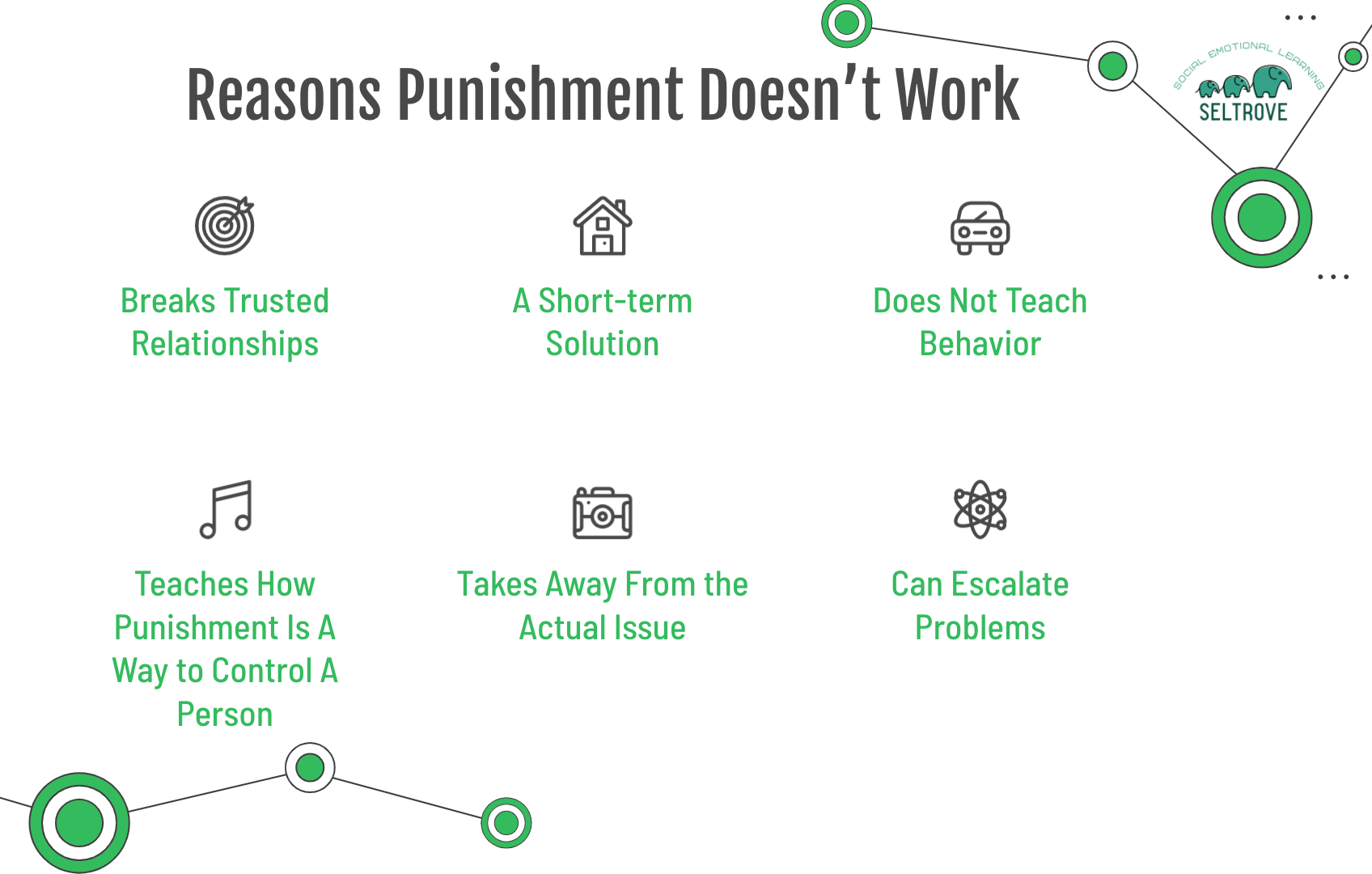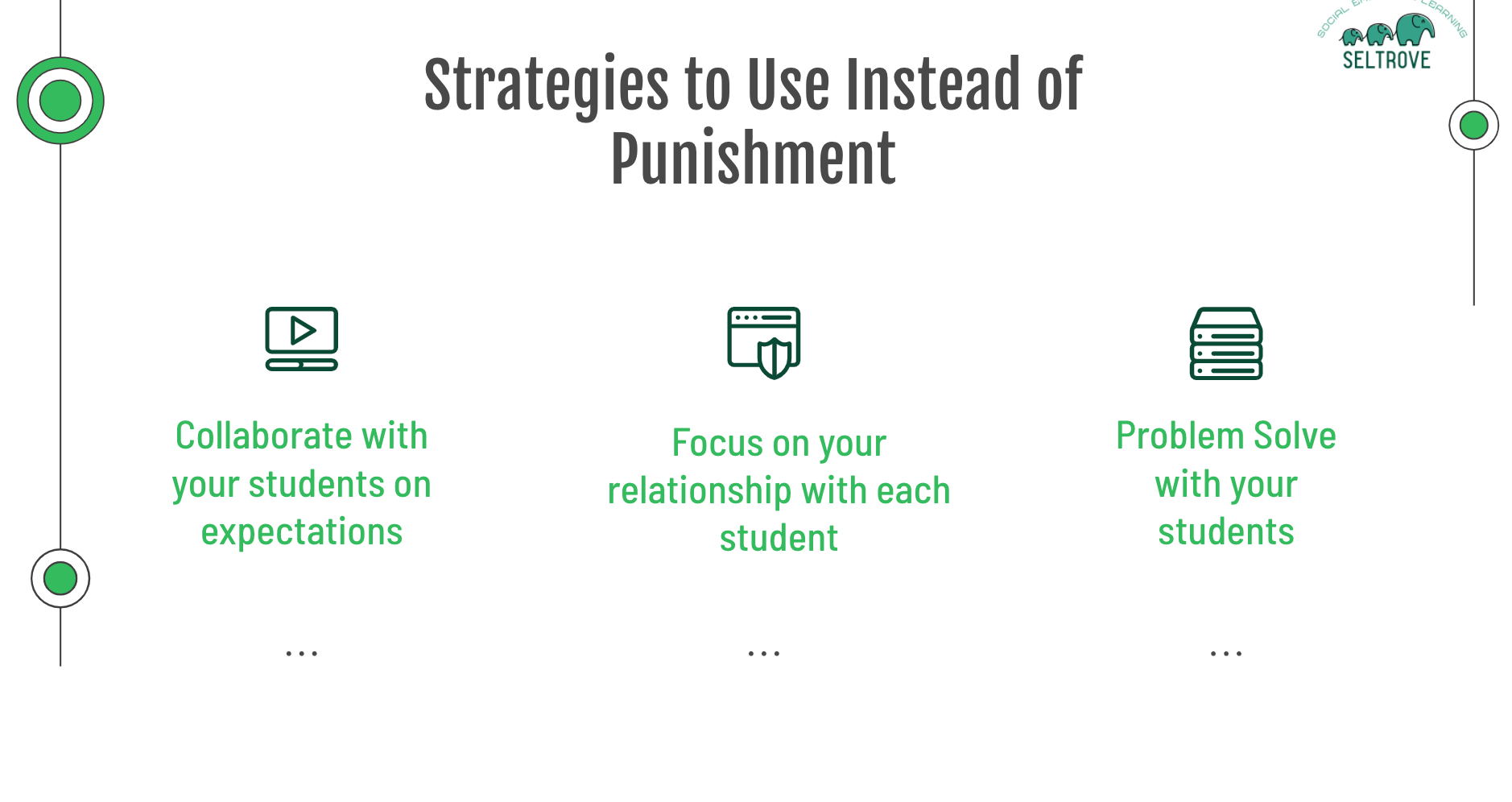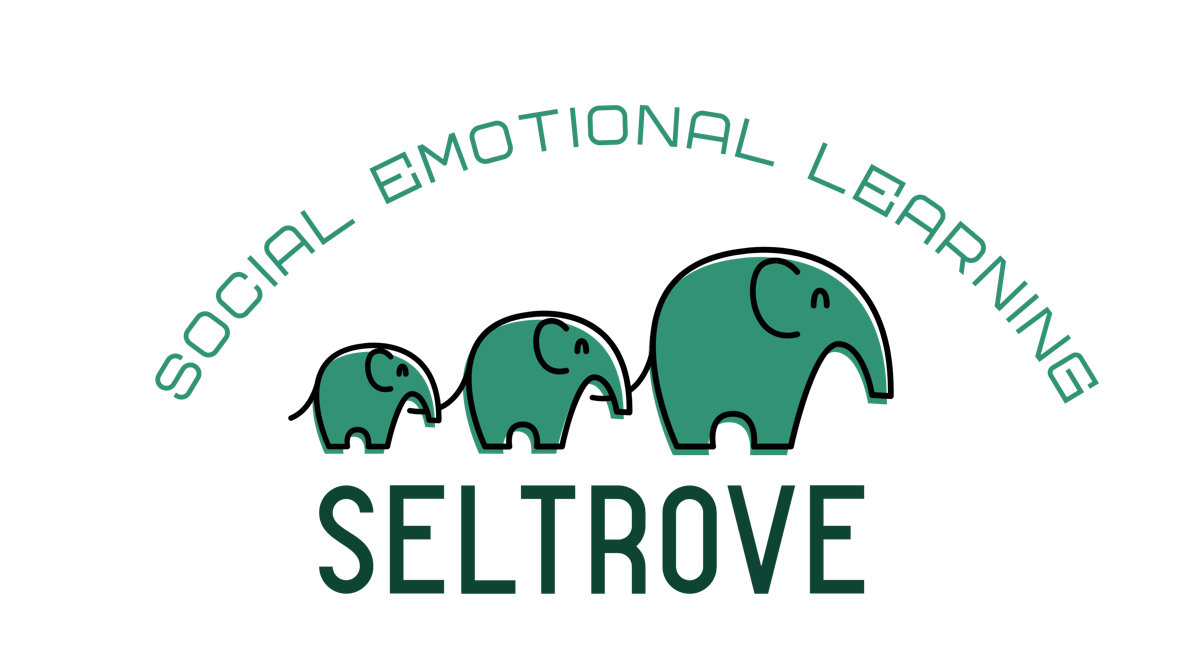Teachers use punishment because they want to see a desired behavior and they are desperate for a student to behave. Many times punishment is a last resort or happens when teachers are tired and out of options. It feels like an easy way to get a student to do what they need to do.
Most often, though, punishment doesn't work. It's a short-term solution used to coerce someone into doing something they don't want to do, instead of uncovering the root of the problem and finding solutions for solving the problem.
Punishment is not aligned with social-emotional learning and it doesn't build positive relationships with your students. Here are some reasons punishment doesn't work:
So what can you do instead?
Teachers can use social-emotional learning to encourage positive behavior in their students. This builds your students' relationship skills, supports the emotional development of your students, and is a more effective classroom management strategy.
Remember: SEL focuses on who we are as individuals and how we relate to the people and world around us. When we use social-emotional learning strategies, we want to build, maintain, and restore healthy relationships with our students, colleagues, and others.
Instead of punishing students, we should be teaching social-emotional skills, problem-solving, and social skills. Here are some strategies for how you can do this:
How can focusing on relationships change how you manage your classroom and student behavior?
Want to learn more? Join our SEL Foundations Teacher Toolkit, which goes through classroom management strategies that are SEL-aligned, creating an SEL classroom environment, and appropriate expectations for your students. You can find the toolkit here: https://seltrove.com/bundle/sel-foundation-bundle-es


